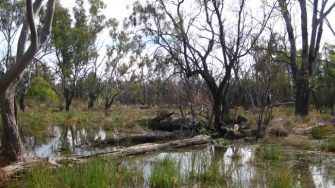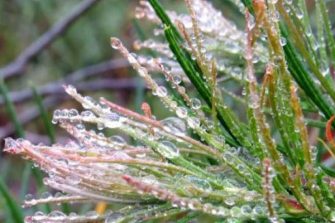
Honours project (2013)
Chantel Benbow
Supervisors
Background
Upland swamps are a type of peat-based wetland locally restricted to coastal plateaus of south-eastern Australia. Upland swamps provide important hydrological services and are noted for their high plant species richness. Spatial turnover in plant community composition is largely correlated with a soil moisture gradient that transitions from dry margins to a waterlogged core, though it is also influenced by fire regimes. This gradient corresponds with availability of plant resources including soil oxygen and nutrient content.
This study investigated spatial and temporal patterns of community stability in two upland swamps in Dharawal Nature Reserve, NSW. We applied diversity‐stability theory, which proposes that species‐rich communities are more stable than speciespoor communities, to test whether diversity promotes community stability in upland swamps.
Data collected from vegetation surveys spanning three decades (1984-2013) were used to examine changes in community stability across a species richness and environmental stress gradient, as well as over two time frames related to the site fire regime. Stability was measured using indices of temporal change in species richness, species composition and relative abundance.
Key findings:
- Diversity does not appear to promote stability in upland swamps.
- The soil moisture gradient explained more of the variation in stability than diversity.
- Communities in the wet core of swamps were more stable than those near the dry margins.
Stress-tolerant traits of species in the wet core and/or compositional changes at the swamp-woodland ecotone may explain greater stability at the core. Future research should aim to distinguish between stress and spatial processes as the major drivers of community stability in upland swamps.
Publications: In preparation.
Project partners
NSW National Parks and Wildlife Services


